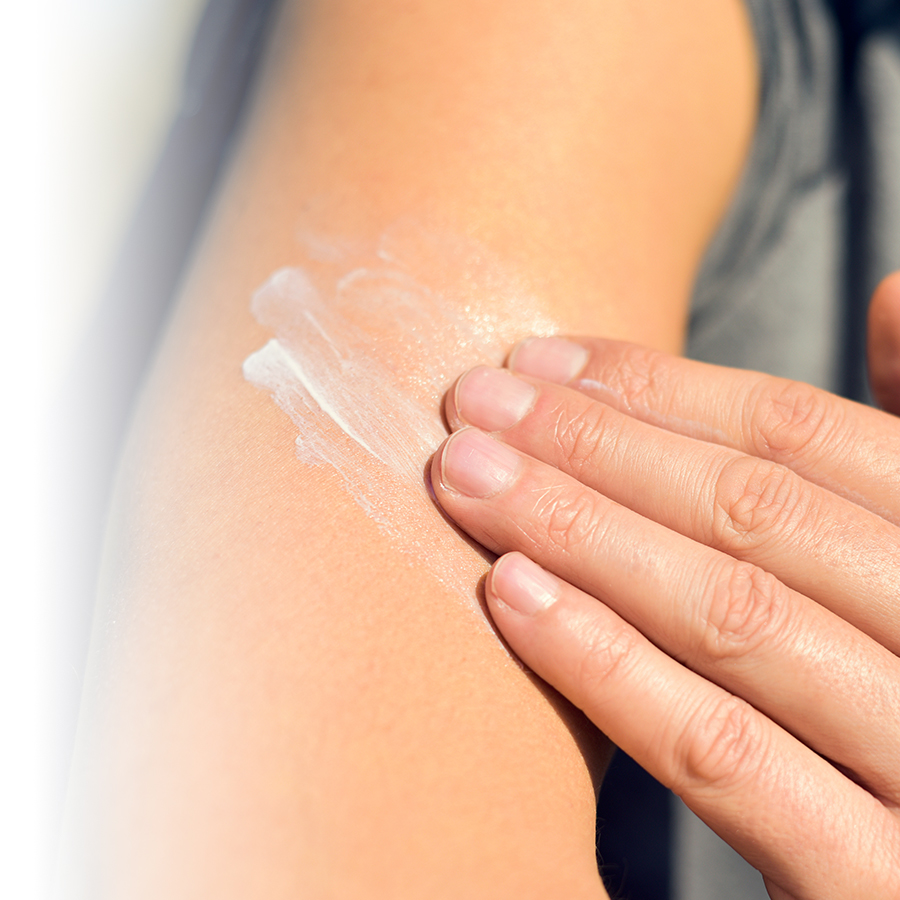Spring means sunshine and warm weather! Every year, many of us enjoy the brightness of the sun and the gentle caress of its rays... but we must not forget the potential harmful effects of the sun skin health!
Here are a few practical tips on how to enjoy the sun and warm weather while maximizing the effects of your sunscreen.
Sun protection: Important all year round
Spring's first rays of sunshine make you want to get out and enjoy it as soon as possible (and rightly so, after such a long winter!). But before you expose yourself to the sun during your outdoor activities, make sure you have the best protection for your skin.
Contrary to what you might think, the sun is just as dangerous for your skin in spring as it is in the middle of July or August. Often less exposed in winter, the skin requires gradual, and above all very careful, exposure to the sun's rays. This will enable you to avoid particularly damaging sunburns.
Remember, too, that sun protection is important even on cloudy days, as the sun's rays can also penetrate clouds and cause skin damage.
What are the health benefits of the sun?
In small doses, the sun's rays have positive effects on physical and mental health. Among other things, they have a beneficial effect on mood and help produce vitamin D, essential for bone health, calcium absorption and proper immune system function.
Exposure to sunlight also promotes good mood and can reduce symptoms of depression thanks to the production of serotonin, also known as the feel-good hormone. What's more, the sun helps regulate our biological clock, improving the quality of our sleep.
Beware of overexposure!
Exposure to the sun also entails certain health risks and requires proper skin protection, whatever the season.
UV rays and sun protection factor
The sun's ultraviolet (UV) rays consist mainly of UVA and UVB rays. UVA rays cause skin aging, while UVB rays are responsible for sunburn, the most common immediate adverse effect of inadequate sun protection. These two types of radiation are also linked to the development of skin cancers. This is why it is important to choose the best sun protection for your skin type.
The best way to measure the effectiveness of a sunscreen is to check the sun protection factor (SPF) indicated on the product label. This protection index gives an estimate of the product's ability to protect against UVB rays (and therefore against sunburn). The higher the SPF, the greater the percentage of UVB rays blocked.
For your sunscreen to be effective, make sure you apply enough of it to provide adequate protection. The recommended amount for adults for each application is between 30 and 45 ml (2 to 3 tablespoons) for the body and 5 ml (1 teaspoon) for the face. Children should use around 25 ml of sunscreen to protect them from the sun's rays.
Skin cancer and the sun
Prolonged exposure to the sun's UV rays can considerably increase the risk of developing certain types of skin cancer, including melanoma, which is among the most aggressive. It's also worth noting that even occasional exposure can cause skin damage that promotes cell mutation and carcinogenesis (the transformation of healthy cells into cancerous ones). So it is crucial to regularly apply a broad-spectrum sunscreen capable of blocking both UVA and UVB rays, even if you limit the amount of time you spend in the sun.
How to protect yourself from the sun?
Here are a few practical tips for enjoying the benefits of the sun while protecting your skin from ultraviolet rays.
- Wear sunglasses and a wide-brimmed hat.
- Reduce your exposure to the sun when its rays are most intense, generally between late morning and mid-afternoon (between 11 a.m. and 3 p.m.).
- Wear clothing that covers as much of your skin as possible.
- Bring a large umbrella for shade when you go to the beach.
- Stay in the shade as often as possible.
- Ask your pharmacist if the medications you are taking may make your skin more sensitive to the effects of the sun.
How to get the most out of your sunscreen?
There are several simple and effective ways to maximize the effectiveness of your sunscreen and enjoy the sun safely:
- Start using a good, easy-to-apply sunscreen over your moisturizer in early spring.
- Apply a generous layer of sunscreen at least 20 minutes before exposure to the sun (two coats are better than one!).
- Choose a sunscreen with a high SPF (at least 30).
- Be sure to cover all areas of skin exposed to the sun (ears, neck, feet, knees, etc.).
- Reapply your sunscreen every two hours, especially after swimming or sweating heavily, even if you're using a water-resistant formula.
Think texture too!
Whether it's a cream, gel, milk or spray, your sunscreen should have a texture that suits your needs and preferences. It will be easier and more pleasant to reapply a product if you like its texture.
Have you thought about after-sun care?
After-sun creams and care are also essential for rehydrating, refreshing, fortifying and soothing your skin after exposure. These products often contain ingredients such as aloe vera, which soothes and repairs overheated skin while helping to prevent premature skin aging. An unscented moisturizer is also a good option.
Get ready to enjoy the sun safely with the right advice from your pharmacist.
Feel free to consult your pharmacist for the best recommendations of sun creams, sun lotions and after-sun care products for your needs. So you can safely enjoy sunny days with your loved ones, family or friends, and fill up on vitamin D!

